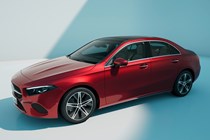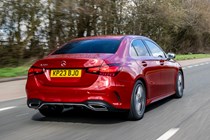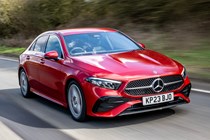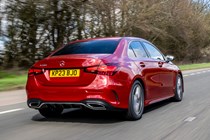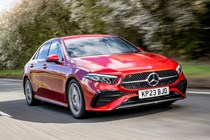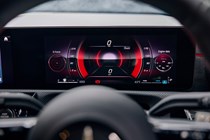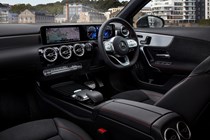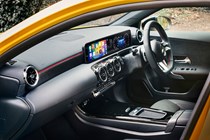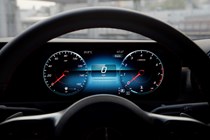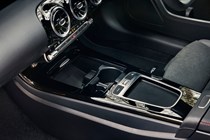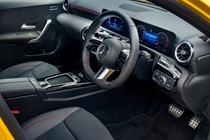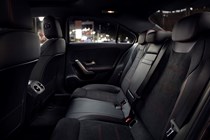
Mercedes-Benz A-Class Saloon running costs and reliability
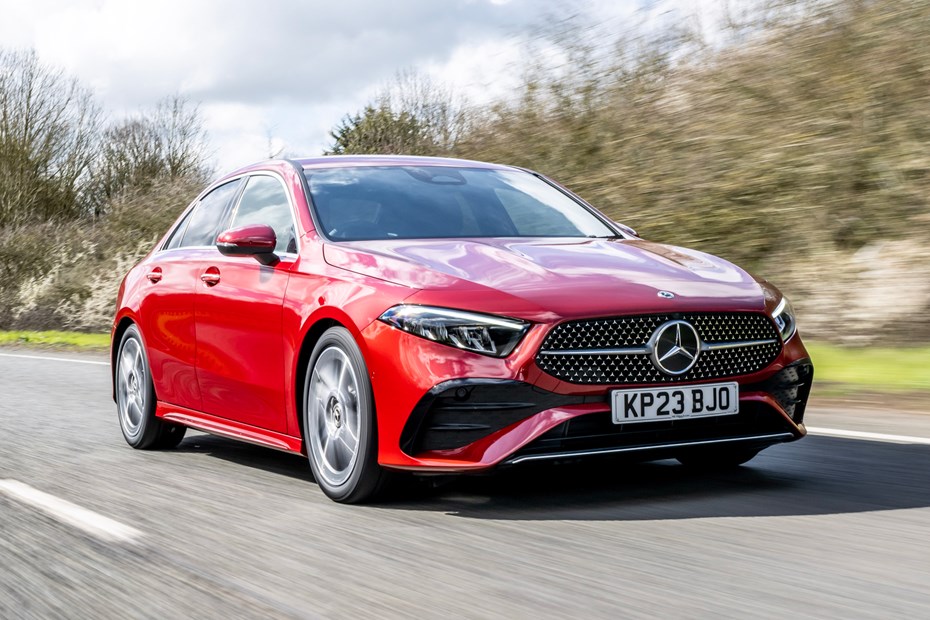
Miles per pound (mpp) ⓘ
| Petrol engines | 5.3 - 7.1 mpp |
|---|---|
| Diesel engines | 6.7 - 8.2 mpp |
| Plug-in hybrid petrol engines * | 6.1 - 6.9 mpp |
Fuel economy ⓘ
| Petrol engines | 36.2 - 48.7 mpg |
|---|---|
| Diesel engines | 52.3 - 64.2 mpg |
| Plug-in hybrid petrol engines * | 41.5 - 47.1 mpg |
- PHEV is the most frugal option on paper
- Diesel can almost drive 500 miles on a tank
- Even the petrol engines are economical
What are the running costs?
Every version of the A-Class should be affordable to fuel but, if you’re chasing the best long-distance economy, go for the A 200 d. Mercedes says it can return up to 57.7mpg on the WLTP cycle – and it’s 43 litre tank gives it a theoretical maximum range of 496 miles. That’s enough to drive from London to Glasgow in one go.
The A 250 e plug-in hybrid looks incredibly efficient on paper, with a claimed fuel economy figure of between 282.5 and 353.1mpg. However, it flatters to deceive because you won’t get anywhere near those figures if you don’t regularly charge its battery at the mains.
If you can fit a charging schedule into your life, though, you’ll reap the rewards. With a full battery, Mercedes says the A 250 e can drive for up to 51 miles on electric power alone, which is more than enough to complete the average UK commute without burning a drop of petrol.

Even the 1.3-litre petrol models have reasonable fuel economy. Mercedes says both the A 180 and A 200 will return between 45.6 and 48.7mpg. We found that to be a little optimistic during our time with the A-Class hatchback – but a steady 40mpg should be achievable if you’re not racing around the neighbourhood like your trousers are on fire.
CO2 emissions vary depending on spec, but we’ll give you the top-line stats. If you’re a company car buyer, go for the PHEV. The highest-emitting model produces just 19g/km of CO2. Couple that with the car’s 51-mile electric range and you’re looking at a Benefit-in-Kind tax rate of just eight percent.
There isn’t a huge disparity in CO2 output between the petrol and diesel models (unless you go for the fuel-swilling AMG 35 variant, that is). The 1.3-litre petrols emit between 132g/km and 140g/km, while the 2.0-litre diesel produces between 128g/km and 131g/km.
So, your choice here is dictated by how many miles you’ll cover in the year. If you’re mainly going to do local journeys, pick the petrol. For long motorway schlepps, buy the diesel.
Servicing and warranty
Mercedes recommends you service the A-Class every 12 months or 15,500 miles – whichever comes first. To help you manage your costs, the company offers a range of service packages that will guarantee the price of parts and labour when you pay for it to protect you against inflation. The package can also be passed on with the car when you come to sell it.
Every new A-Class also comes with a three-year, unlimited mileage warranty with pan-European roadside assistance. That’s good, but it can’t match the 10-year warranty offered by Toyota and Lexus or Kia’s seven-year warranty.
Reliability
- Owners aren’t impressed with quality and reliability
- Loads of advanced tech, which can be expensive to fix
- But there haven’t yet been any recalls for the car
We thought the A-Class Saloon was fairly solid during our short time with the car, but it seems that polish wears off quickly. Multiple contributors from our owners’ reviews section have complained about unbearable dashboard rattles within the first two years of ownership, which is very poor. The problem is consistent across the A-Class Saloon and A-Class hatchback.
The A-Class’s technology hasn’t proved to be the most reliable, either. There are reports of failing sat-nav systems, faulty climate control panels and jittery alarms. As a new car, these faults could be mended under warranty – but it doesn’t bode well for older used cars without that protection.
Thankfully, the A-Class’s engines appear to be reliable. There haven’t been any horror stories of major mechanical failures, although there have been a couple of odd software glitches. Mercedes also hasn’t issued any recalls for the car since it was launched in 2019.
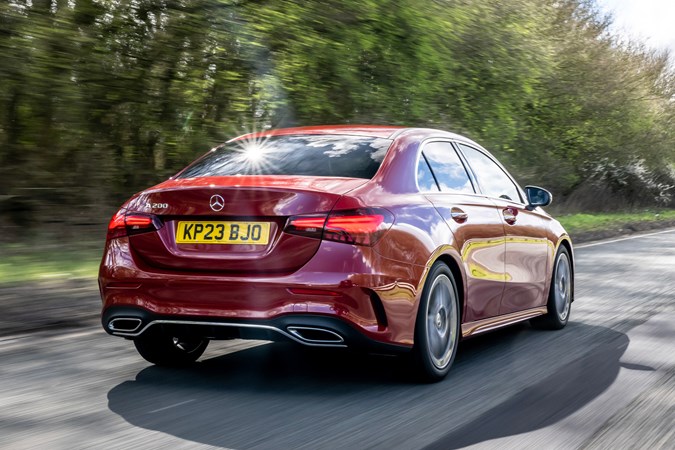
Ongoing running costs
| Road tax | £195 - £620 |
|---|---|
| Insurance group | 16 - 33 |
Get an insurance quote with

|
|



